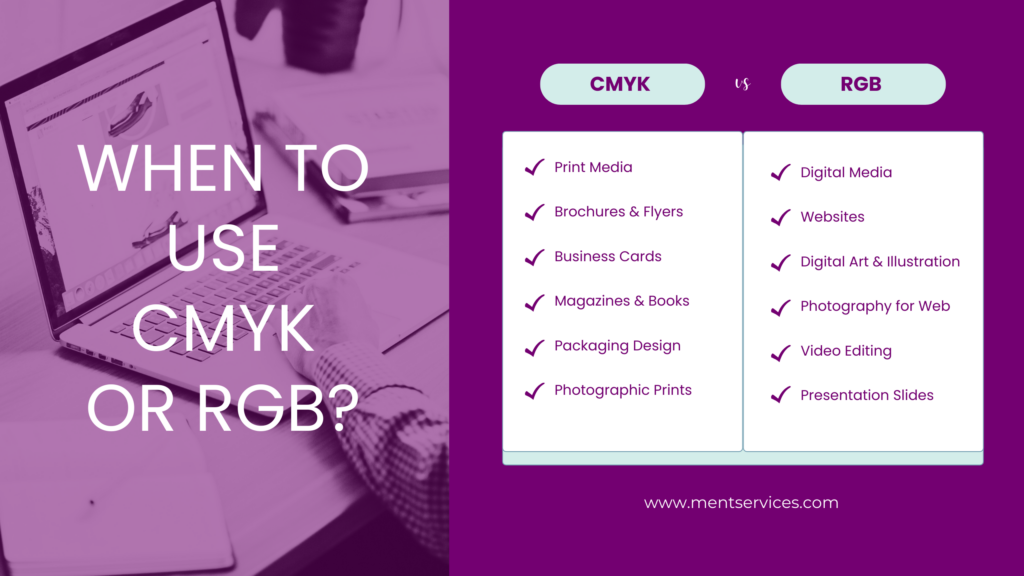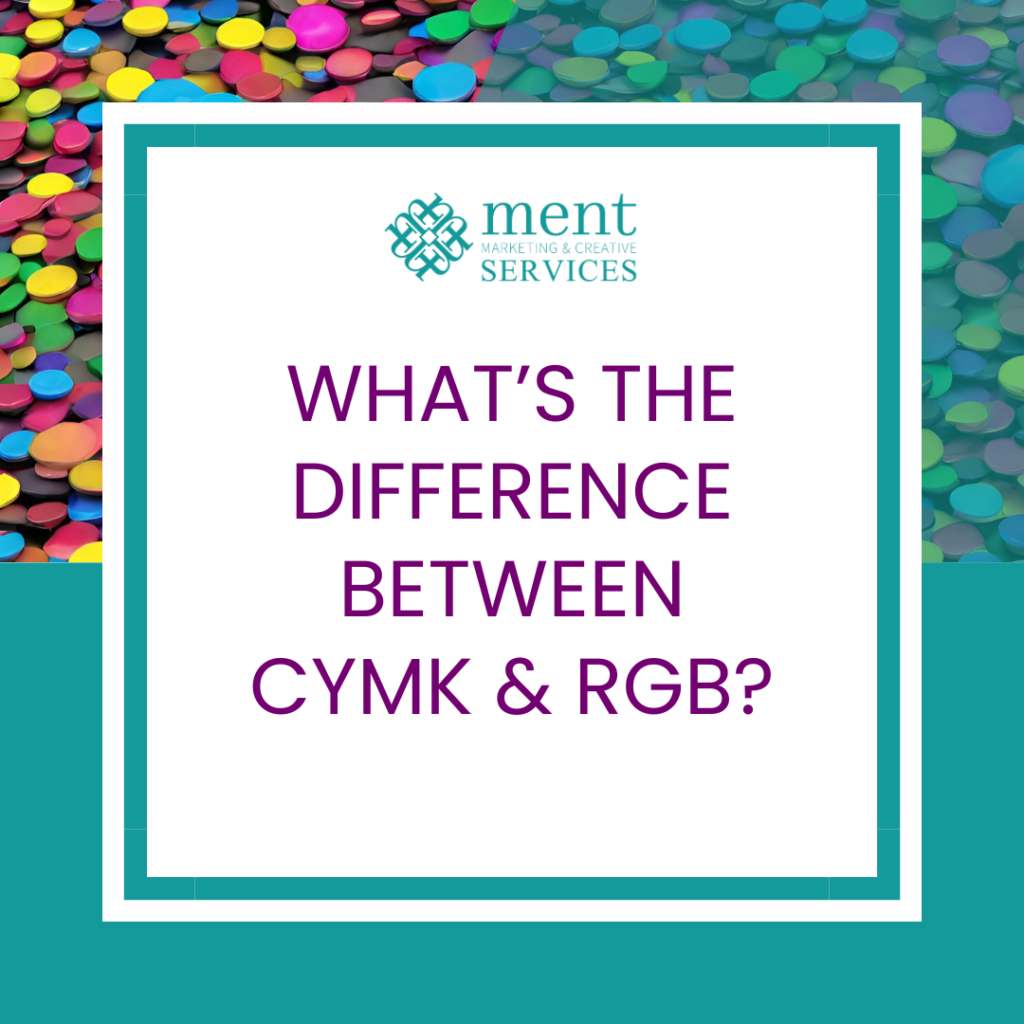Have you ever wondered why the colors on your computer screen sometimes look different when printed on paper? It’s all about the fascinating world of color modes, and understanding when to use CMYK and RGB can make a world of difference in your design and printing projects. In this post, we’re going to unlock the secrets behind these two color modes and show you how to make your colors pop, whether they’re on screen or in print.

The Difference Between RGB and CMYK
For starters, CMYK is used to represent colors for print media such as brochures, posters, and business cards. CMYK color codes are specifically designed for printing so these are best to ensure that the colors in your design look the way you intended them to when printed. The term “CMYK” stands for Cyan, Yellow, Magenta, and key/Black. The reason “K” stands for Black is because Cyan + Magenta + Yellow = Black. From these primary colors, we’re able to use ratios of different amounts to create desired colors through layering that are close enough to the color we see online. Like any amount of color we have, there are limits, and there are a total of +16,000 color combinations that we use on a daily basis to print.
As for RGB, it’s used to represent colors on digital devices such as computer monitors, TVs, and mobile screens. RGB color codes are used for web design and digital graphics. They are represented by three sets of numbers, each ranging from 0 to 255. RGB stands for Red, Green, and Blue as its primary colors and when combined, they create white. RGB is a little different from CMYK, as the mixing of colors is an additive process where adding light (from your electronics) creates color. To add on, unlike CMYK only being able to create +16,000 colors, RGB can create over 16.7 million colors.

When to use RGB vs CMYK?
RGB is the go-to choice because it accurately represents how colors are generated and displayed on electronic screens, which rely on the addition of red, green, and blue light to create a wide spectrum of colors.
RGB is best for:
- Websites and Digital Media
- Digital Art and Illustration
- Photography for Web
- Video Editing
- Presentation Slides
CMYK is essential because it aligns with the subtractive color model used in printing, where ink is applied to paper to absorb specific colors. Proper use of CMYK ensures that printed materials accurately reproduce the desired colors and maintain consistency across various printing processes and devices.
CMYK is best for:
- Brochures and Flyers
- Business Cards
- Magazines and Books
- Packaging Design
- Large Format Printing
- Corporate Branding
- Photographic Prints



